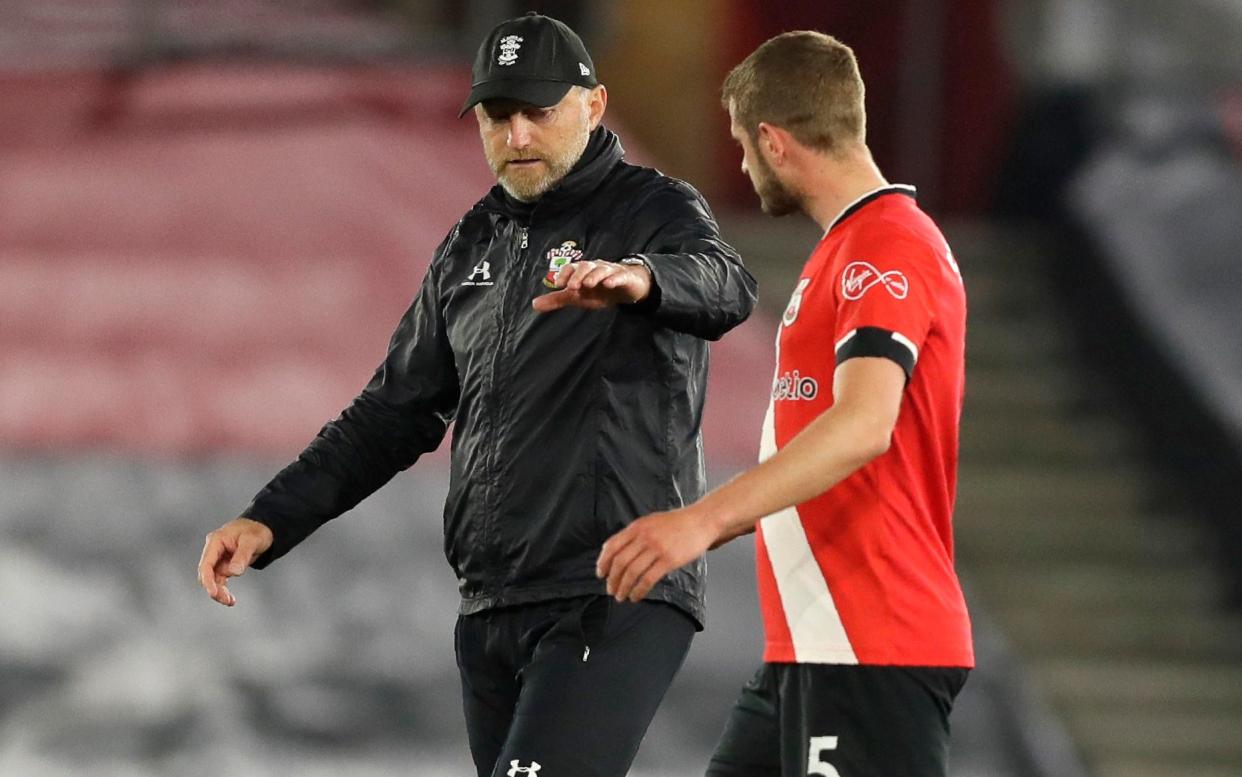Southampton's decline explained: Tired legs, less pressing and goalkeeping problems

Tottenham Hotspur's search for a new manager has seen them linked with more than 20 names, but one coach who has slipped off the radar is Southampton's Ralph Hasenhuttl. How short memories are in football.
Had Spurs been recruiting before Christmas, the Austrian will surely have been a serious candidate with Southampton punching above their weight on the strength of his high-octane, pressing style with its characteristically narrow midfield.
Hasenhuttl is still that same coach and an impressive figure but Southampton have been in an alarming trough since then. No team has won fewer Premier League points since the turn of the year with Southampton losing 13 of their last 18 and conceding a league-high 40 goals in 2021.
How to explain their regression? The obvious place to start, especially in this condensed and draining season, is whether the physical demands of Hasenhuttl's football have caught up with a small squad.
They have certainly had a rough time with injuries, and the stats also show the intensity without the ball has declined. There is a chicken and egg element to this; are tired legs the cause or have Southampton dialled down their pressing to preserve those tired legs?
Passes per defensive action is a good indicator of the ferocity of a team's pressing. The fewer passes they allow before making a tackle, interception, foul or winning a duel, the more intense the pressing. So the lower the number, the better.
Before the turn of the year, Southampton ranked third in the Premier League with a PPDA average of 10.4. That number has increased to 12.4 since January, ranking them 10th in the league. Given this aspect of football is the cornerstone of their philosophy under Hasenhuttl, it is a significant reduction.
Another long-running issue for Southampton is the quality of their goalkeeping. One way to measure the quality of shot-stopping is using According to Opta's Expected Goals on Target metric. XGoT, unlike expected goals, is a post-shot model. That means it takes into account not just the location and quality of the shot, but the goalmouth location where the shot finishes, throwing out all those that are off target.
Subtract goals conceded from XGoT faced, and you get a strong sense of which goalkeepers are conceding more than they should from the quality of shots faced. As a club, whether Alex McCarthy or Fraser Forster start, Southampton rank bottom of this metric.
As individuals, McCarthy has conceded 50 goals from an XGoT faced of just 41.96. Only Crystal Palace's Vicente Guaita has a bigger negative differential in the league. Southampton should be in the market for a new No 1 this summer.

